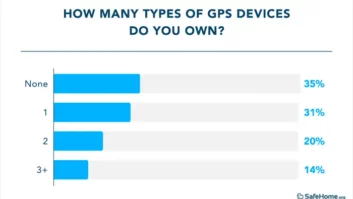 The impact of the COVID-19 pandemic will affect both current and future generations. Because of the scale of this pandemic, many experts say there will be irreversible changes to the economy, how businesses operate and daily life. Retailers and business owners should be informed about changes in consumer behavior and spending habits due to the COVID-19 pandemic.
The impact of the COVID-19 pandemic will affect both current and future generations. Because of the scale of this pandemic, many experts say there will be irreversible changes to the economy, how businesses operate and daily life. Retailers and business owners should be informed about changes in consumer behavior and spending habits due to the COVID-19 pandemic.
Companies should be willing to adopt new technologies to help customers find what they need and build brand loyalty if they want to succeed.
Businesses always have and will continue to face various frustrations when trying to increase revenue and reduce costs. This became more apparent during the pandemic. Consumer behavior changes will play a pivotal role in a company’s ability to maneuver this new normal.
Here are some consumer behavior changes that have impacted and will continue to impact businesses in all industries.
1. Digital Shopping Will Remain
The digitization of retail was accelerated due to the pandemic, and it’s something that will likely remain as time goes on. Retailers will have to retarget their audiences and funnel more resources into their marketing strategies when they transition to digital platforms.
Reaching a consumer through mobile advertising and online platforms will determine sales success and, ultimately, return on investment (ROI). If businesses want to stay afloat and remain a competitor, they’ll have to understand that digital marketing generates leads and will help them grow. Whether it’s grocery delivery or ordering clothes online, digital retail is expected to experience exponential growth in the upcoming years.
2. Consumers Shop Locally
As restrictions lift and more people get vaccinated, it’s no surprise that people want to get out of the house and shop locally. This helps boost the local economy and allows small businesses to thrive during uncertain times.
In a survey conducted by Nextdoor, 72% of respondents said they’re planning on visiting local businesses more often after the pandemic. This data shows how the fear of exposure to the virus drives people to stay closer to home. It’s the hope that small companies will continue operating despite the shift to digital shopping.
3. People Are Shopping Sustainably
People were introspective during this pandemic, and more often than not, found new ways to lessen their carbon footprint and live greener. Whether it was purchasing a reusable water bottle or spending their money on free-trade items, this move toward green living will likely be here to stay.
People felt obligated to shop more sustainably in the U.K., and these changes are expected to have long-lasting effects.
4. Value-Based Shopping Emerges
Consumers that base purchasing decisions on their values and principles engage in value-based shopping. This behavior was increasing before the pandemic, and COVID-19 accelerated the change. People were forced to buy only the essentials during their grocery trips.
In a study by Accenture, 88% of people said they were worried about the economy’s health during the pandemic. Retailers can take a value-centric approach to their marketing plans and make necessary adjustments when they know their target market’s values.
5. Convenience Is Key
Above all else, shoppers crave convenience. Waiting in long lines, searching through the limited stock of products and spending time on transactions all contribute to the inconvenient nature of shopping. Creating an effortless experience for consumers will be necessary for retailers in the future.
Convenience shopping is a growing trend that businesses should keep in mind as the end of the pandemic nears. Tailoring a store to accommodate shoppers who want grab-and-go options will be crucial during this time.
6. Shoppers Are More Health-Conscious
The pandemic caused consumers to be much more concerned about their health as the virus tore through countries and left hospitals overflowing. Wearing masks and social distancing while shopping became commonplace. Sanitizing frequent touchpoints and offering cashless payment were other changes stores had to implement during the pandemic.
Mental and physical health may play a more critical role in consumer behavior than it ever has before. Shoppers are more aware of the status of their health, which will undoubtedly impact their purchasing decisions.
Shopper behavior has and will continue to be an area of concern for retailers and researchers alike. There are so many contributing factors that affect changes in consumer behavior. Sometimes it can be challenging to analyze it until after the fact.
Ever-Changing Consumer Behavior
Emotions, attitudes and buying preferences all play a role in consumer behavior — understanding the concept is like trying to hit the bullseye on a moving target. However, businesses should consider adjusting to these new changes to achieve success.
Devin Partida is a technology writer and blogger. She is the Editor-in-Chief at ReHack magazine, where she covers consumer electronics, apps and tech trends.
See also: Top 8 Ways To Get Customers To Purchase From You Instead Of Amazon













